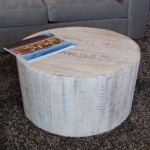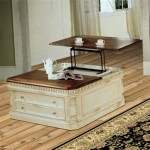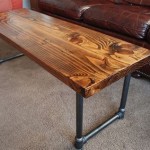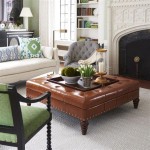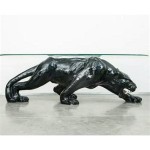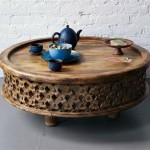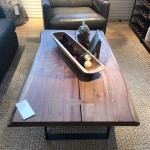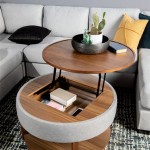Small Bed Table Ideas: Optimizing Space and Functionality
Small bedrooms often present unique design challenges, particularly when it comes to incorporating essential furniture. The bedside table, a staple in most bedrooms, can quickly become a space hog in a smaller room. However, its functionality in providing a surface for lamps, books, alarms, and personal items remains indispensable. This article explores a range of small bed table ideas, focusing on maximizing space and functionality while maintaining aesthetic appeal.
The key to selecting the right small bed table lies in understanding the room's dimensions, the user's needs, and the available vertical space. A focus on multi-functional designs and creative placement can transform a cramped bedside area into an organized and accessible space.
Wall-Mounted Bedside Shelves: Minimalism and Space Saving
Wall-mounted bedside shelves represent a minimalist and highly effective solution for small bedrooms. By eliminating legs, these shelves free up valuable floor space, creating a sense of openness. They are easily installed and can be adjusted to the desired height, making them adaptable to various bed frames and user preferences.
The design options for wall-mounted shelves are extensive. Simple, floating shelves offer a clean and contemporary look. Shelves with integrated drawers provide hidden storage for personal items. Corner shelves can effectively utilize often-overlooked spaces. The material and finish should complement the existing bedroom decor, ensuring a cohesive aesthetic. For instance, a light wood shelf can bring warmth to a minimalist bedroom, while a sleek, black shelf can enhance a modern design.
Installation of wall-mounted shelves requires careful consideration of the wall type and weight capacity. Using appropriate anchors and hardware is crucial to ensure the shelf's stability. A stud finder can help locate wall studs, providing a secure attachment point for heavier items. Even with solid installation, it's still prudent to avoid overloading the shelf with excessive weight.
Furthermore, incorporating a small cable management system can help keep cords organized and out of sight. This can be achieved by drilling small holes in the back of the shelf to route cables or by using adhesive cable clips to secure them to the wall. A clean and organized bedside area contributes to a more restful and relaxing sleep environment.
Hanging Bedside Organizers: Soft Storage Solutions
Hanging bedside organizers offer a soft and adaptable storage solution, particularly well-suited for beds without headboards or in rooms where traditional furniture is not feasible. These organizers typically consist of fabric pockets and compartments that hang from the bed frame or nearby structures, providing convenient access to essential items.
The primary advantage of hanging organizers is their flexibility. They can be easily moved or rearranged to suit the user's needs. They are also lightweight and foldable, making them ideal for travel or temporary living situations. The variety of designs and materials available allows for customization to match the bedroom's style. Options range from simple, minimalist designs in neutral colors to more elaborate organizers with multiple pockets and compartments.
Material selection is important when choosing a hanging organizer. Durable fabrics like canvas or linen are recommended for their longevity and resistance to wear and tear. Some organizers may feature reinforced stitching or waterproof linings to protect against spills. The size of the pockets and compartments should be considered based on the items to be stored. Larger pockets can accommodate books or tablets, while smaller pockets are suitable for phones, remotes, or glasses.
One potential drawback of hanging organizers is their limited storage capacity compared to traditional bedside tables. They are best suited for storing a few essential items. Furthermore, the hanging design may not be aesthetically pleasing in all bedrooms, particularly those with a more formal or traditional decor. However, for small spaces where functionality is paramount, hanging organizers provide a viable and cost-effective solution.
Multi-Functional Furniture: Ottomans, Trunks, and Benches
Incorporating multi-functional furniture is a clever way to maximize space in small bedrooms. Ottomans, trunks, and benches can serve as both seating and storage, eliminating the need for separate bedside tables and storage units. These pieces can be placed alongside the bed, providing a surface for lamps and personal items while offering ample storage space inside.
Ottomans with hinged or removable tops are particularly versatile. They can be used as a footrest, a seating area, and a storage container. Trunks offer a more rustic and traditional aesthetic, providing secure storage for larger items. Benches can be placed at the foot of the bed or along the side, offering seating and a surface for displaying decorative items.
When selecting multi-functional furniture, it is essential to consider the size and style of the piece. It should be proportionate to the bed and the room's dimensions. The material and finish should complement the existing decor. Upholstered ottomans and benches can add a touch of luxury and comfort, while wooden trunks and benches offer a more durable and practical solution.
The interior storage space of these furniture pieces can be optimized with the use of dividers, baskets, or organizers. These accessories help to keep items neatly arranged and easily accessible. It is also important to consider the ease of access to the storage space. Hinged tops and removable lids provide convenient access, while drawers offer a more organized storage solution.
For example, consider an ottoman that aligns with the height of the bed. This can serve as a makeshift bedside table, providing a surface for a lamp and alarm clock, while the interior can hold extra blankets and pillows. Similarly, a narrow bench placed alongside the bed can serve as a display surface and seating, while the storage compartment can be used for books or shoes.
Repurposed Items: Trays, Stools, and Ladders
Repurposing existing items offers a creative and cost-effective approach to creating small bed tables. Trays, stools, and ladders can be transformed into functional and stylish bedside surfaces, adding a unique character to the bedroom.
A simple serving tray can be placed on a small stool or stacked books to create a makeshift bedside table. The tray provides a stable surface for lamps, drinks, and other essentials. Stools offer a versatile and portable option, easily moved around the room as needed. Ladders can be leaned against the wall to create a tiered storage system, with each rung serving as a shelf for books, plants, and decorative items.
The key to successful repurposing is to consider the stability and functionality of the item. Trays should be sturdy and have a raised edge to prevent items from sliding off. Stools should be stable and able to support the weight of the items placed on them. Ladders should be securely fastened to the wall to prevent them from tipping over.
The aesthetic appeal of repurposed items can be enhanced with paint, fabric, or other decorative materials. A plain wooden tray can be painted to match the bedroom's color scheme or covered with a decorative fabric. A stool can be upholstered with a comfortable cushion. A ladder can be adorned with fairy lights or draped with a decorative scarf.
For instance, an old stepladder can be painted a vibrant color and placed beside the bed. Each step can hold a book, a plant, and a bedside lamp, creating a unique and visually appealing bedside display. Similarly, a stack of vintage suitcases can be used as a bedside table, adding a touch of nostalgia to the room.
Floating Drawers: Hidden Storage and Surface Space
Floating drawers provide a combination of hidden storage and surface space, making them an ideal solution for small bedrooms. These drawers are mounted directly to the wall, creating a clean and minimalist look while maximizing floor space. They offer a discreet storage solution for personal items, keeping the bedside area clutter-free.
The design options for floating drawers are varied. Simple, rectangular drawers offer a sleek and contemporary look. Drawers with integrated handles or push-to-open mechanisms create a seamless and streamlined appearance. Drawers with built-in charging stations provide a convenient way to charge electronic devices overnight.
Installation of floating drawers requires secure attachment to the wall. Using appropriate anchors and hardware is crucial to ensure the drawer's stability, especially when it is fully loaded. A stud finder can help locate wall studs, providing a secure attachment point. It is also important to consider the weight capacity of the drawers and avoid overloading them with excessive weight.
The interior of the floating drawers can be organized with dividers, organizers, or trays. These accessories help to keep items neatly arranged and easily accessible. It is also important to consider the height of the drawer when mounting it to the wall. It should be positioned at a comfortable height for reaching and accessing items.
One of the major advantage of using floating drawers is the free space under it. This is really helpful to keep other things like books or shoes without making your room full.
Built-In Bedside Niches: Integrated Storage and Style
Built-in bedside niches offer a seamless and integrated storage solution, particularly well-suited for new constructions or renovations. These niches are recessed into the wall, creating a custom-built storage space that blends seamlessly with the room's architecture. They can be designed to accommodate a variety of items, from books and lamps to electronic devices and personal belongings.
The primary advantage of built-in niches is their space-saving design. By recessing the storage space into the wall, they eliminate the need for bulky bedside tables, creating a more open and spacious feel in the bedroom. They also offer a clean and minimalist aesthetic, seamlessly integrating with the room's decor.
The design possibilities for built-in niches are endless. They can be customized to any size and shape, allowing for the creation of unique and personalized storage solutions. They can be finished with paint, wallpaper, or tiles to match the room's decor. They can also be equipped with lighting, outlets, and other features to enhance their functionality.
Construction of built-in niches requires careful planning and execution. The wall must be structurally sound and able to support the weight of the niche and its contents. Proper framing and insulation are essential to prevent moisture damage and ensure energy efficiency. Electrical wiring should be handled by a qualified electrician.
While built-in niches require a more significant investment than other small bed table ideas, they provide a long-lasting and aesthetically pleasing storage solution that can enhance the value of the home. They offer a perfect blend of functionality and style, creating a seamless and integrated storage space that complements the bedroom's design.

Best Night Stand Alternative Ideas For Small Bedrooms
Diy Bedside Table Ideas 20 Brilliant Homerun Blog

How To Build Easy Diy Nightstands Young House Love

20 Diy Budget Bedside Table Ideas The Kindest Way

The Domestic Curator Creative Nightstands

15 Smart Nightstand Ideas For Small Space Solutions Homemydesign

How To Decorate A Nightstand Stonegable

7 Creative Small Nightstand Ideas For Bedrooms Arcedior

61 Cool And Functional Small Nightstands Digsdigs

Nightstand Just Decorate
Related Posts

